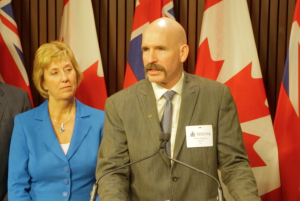A black Cadillac pulls up to a side door of the hotel and waits. “Something’s up,” I think to myself. Behind the wheel is a man in his 40’s, he looks South Asian. A pimp, perhaps? Not likely. He more fits the profile of a typical driver. In the sex industry, drivers are private owner/operators, often used to shuttle girls on “outcalls” to meet with clients. It’s a cash-only transaction, and there’s never record of the fare.
 I happened to be circling the hotel because I was looking for a particular vehicle; a BMW sedan. Earlier that day, I had spoken with a woman who was concerned that her daughter might be in the company of a human trafficker –the owner of the Beamer I’m looking for. This was the first place for me to look because it’s always crawling with pimps and johns. I don’t see the car, so I head across the street to a second hotel. Again, I come up empty.* As I drive back onto the service road, I notice two teenage girls emerge from the first hotel -15 years old, perhaps, maybe 16. They’re all dolled up and wearing heels. As you guessed, they climb in to the back seat of the black Caddy.
I happened to be circling the hotel because I was looking for a particular vehicle; a BMW sedan. Earlier that day, I had spoken with a woman who was concerned that her daughter might be in the company of a human trafficker –the owner of the Beamer I’m looking for. This was the first place for me to look because it’s always crawling with pimps and johns. I don’t see the car, so I head across the street to a second hotel. Again, I come up empty.* As I drive back onto the service road, I notice two teenage girls emerge from the first hotel -15 years old, perhaps, maybe 16. They’re all dolled up and wearing heels. As you guessed, they climb in to the back seat of the black Caddy.
Human trafficking is big business in the Toronto area. Whether it’s the hotels or some guy trying to earn a few bucks on the side, a lot of people are eager to share in the profits. As I merge onto highway 401, I notice the Caddy is on my tail. I’m quickly overtaken, as the car weaves in and out at an excessive speed. Time is money, and the driver is doing is best to regain the lost minutes waiting for the girls.
That’s what it’s all about. The money. It’s why girls, like the two kids in the black car, are being trafficked in the sex industry. It’s why the hotels rent rooms to youngsters with fake ID and prepaid credit cards, while their so-called “boyfriends” watch from across the lobby. If it wasn’t for the profits, none of this would be happening. And I would have no BMW to look for because no pimp could ever buy one without his dirty money.
Like anything else, it’s about supply and demand. The demand is driven by middleclass family men from the suburbs who are willing to use their money to access something to which they have no right. The other day I shared my concern with a precious young lady whose exploitation began when she was 15 years old –that no amount of money had ever bought the right for any man to touch her. Her response came in the form of tears.
In 2014 Canada gained new criminal code restrictions on the purchase sexual services. But most think that’s a little extreme. Right now, the provinces are trying what might be considered a more balanced approach. The idea is that we should allow people to enjoy prostitution, but not tolerate human trafficking. The various police forces around the GTA, for example, are right now racking up record numbers of human trafficking arrests. Punishing pimps is a good idea but it’s not even partially achieving the objective of reducing domestic human trafficking. Only when the flow of that dirty money stops will the trafficking of vulnerable young people come to an end.
The money is the driver.
*My work with parents of exploited young people sometimes involves gathering information to help them dialogue more effectively with police, as they seek to intervene on behalf of their children. I play no direct role in punishing pimps.

